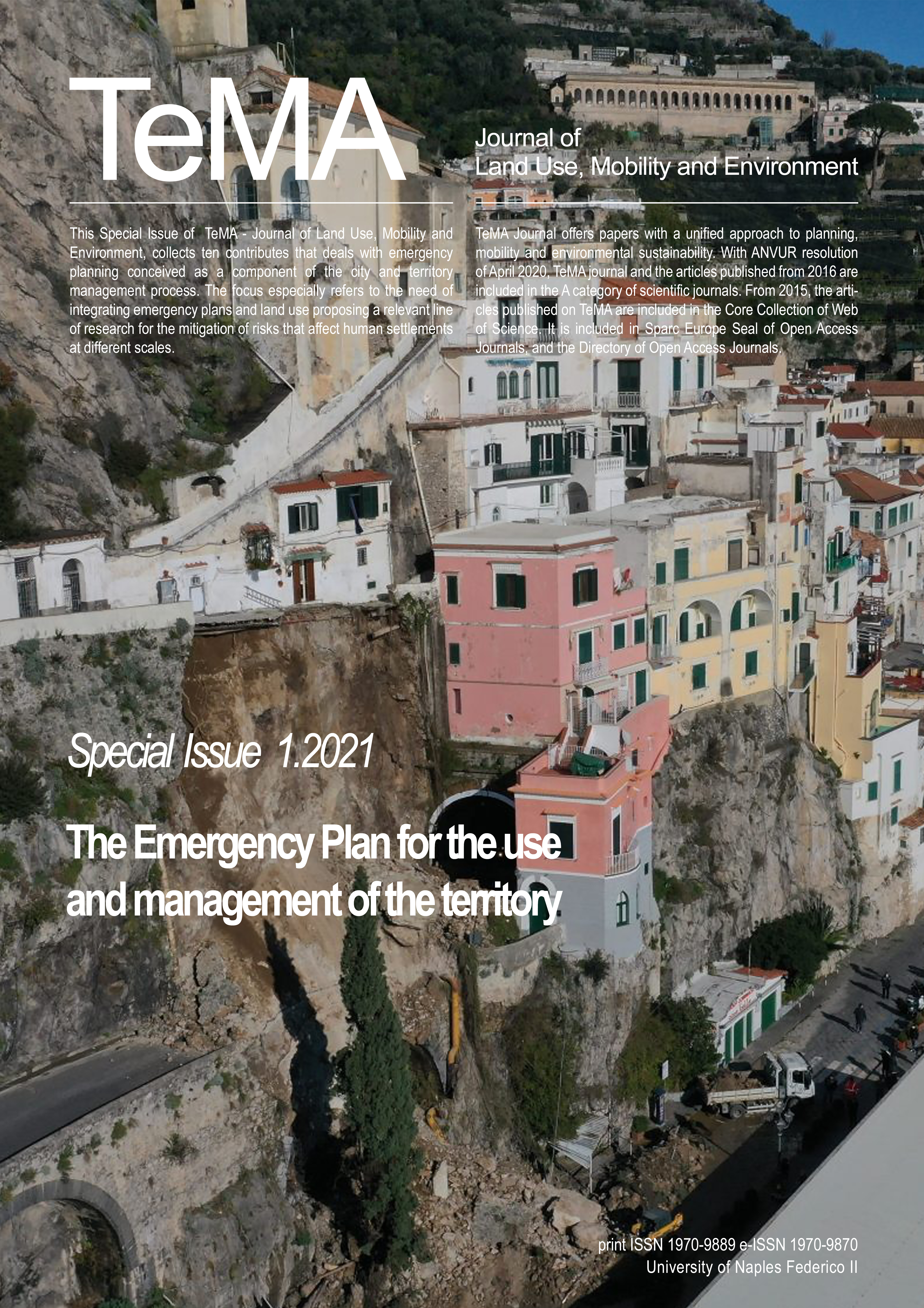Spatial knowledge for risks prevention and mitigation
The civil protection planning of the Abruzzo Region
DOI:
https://doi.org/10.6093/1970-9870/7404Keywords:
Civil Protection Planning, Disaster risk Management, Knowledge SystemsAbstract
The scientific research described in this paper concerns the theme of Civil Protection Planning at Regional level and Disaster Risk Management. In particular, it concerns the definition and experimentation of a particular model of basic Knowledge System.
This model, which has been tested within the definition and predisposition of the ‘Knowledge elements of the Abruzzo Region territory and civil protection organization of the Abruzzo Region (It)’, is the result of a continuous and dynamic technical-scientific action, whose structure must necessarily be flexible in order to collect and analyse data and information concerning themes, the risks, which are constantly changing. In the research, an original analytical methodology of the Knowledge System has become the basis for the experimentation of a Regional Management Risk Plan (case study Abruzzo Region), a part of the Regional Civil Protection Plan, which allows to identify the Hotspots, i.e. areas characterized by very high and probably simultaneous risks, in which it is strictly necessary to identify prevention and mitigation interventions, the ‘Territorial Prevention and Recovery Projects’ that concern the structural activities of civil protection. The next steps will concern the definition of the methodology for the construction of a Digital Knowledge Platform for the establishment of a Spatial Information Modeling.
Downloads
Downloads
Published
How to Cite
Issue
Section
License
Authors who publish in this journal agree to the following:
1. Authors retain the rights to their work and give in to the journal the right of first publication of the work simultaneously licensed under a Creative Commons License - Attribution that allows others to share the work indicating the authorship and the initial publication in this journal.
2. Authors can adhere to other agreements of non-exclusive license for the distribution of the published version of the work (ex. To deposit it in an institutional repository or to publish it in a monography), provided to indicate that the document was first published in this journal.
3. Authors can distribute their work online (ex. In institutional repositories or in their website) prior to and during the submission process, as it can lead to productive exchanges and it can increase the quotations of the published work (See The Effect of Open Access)


